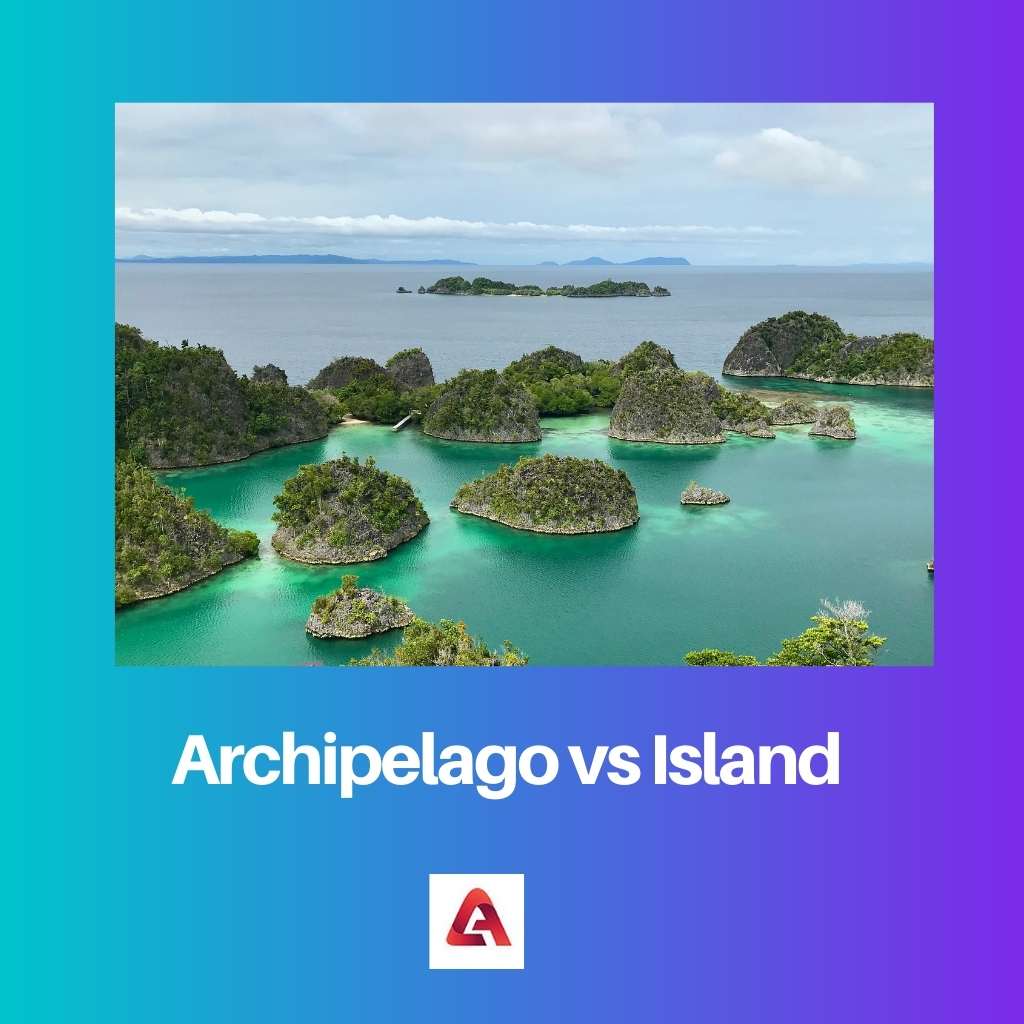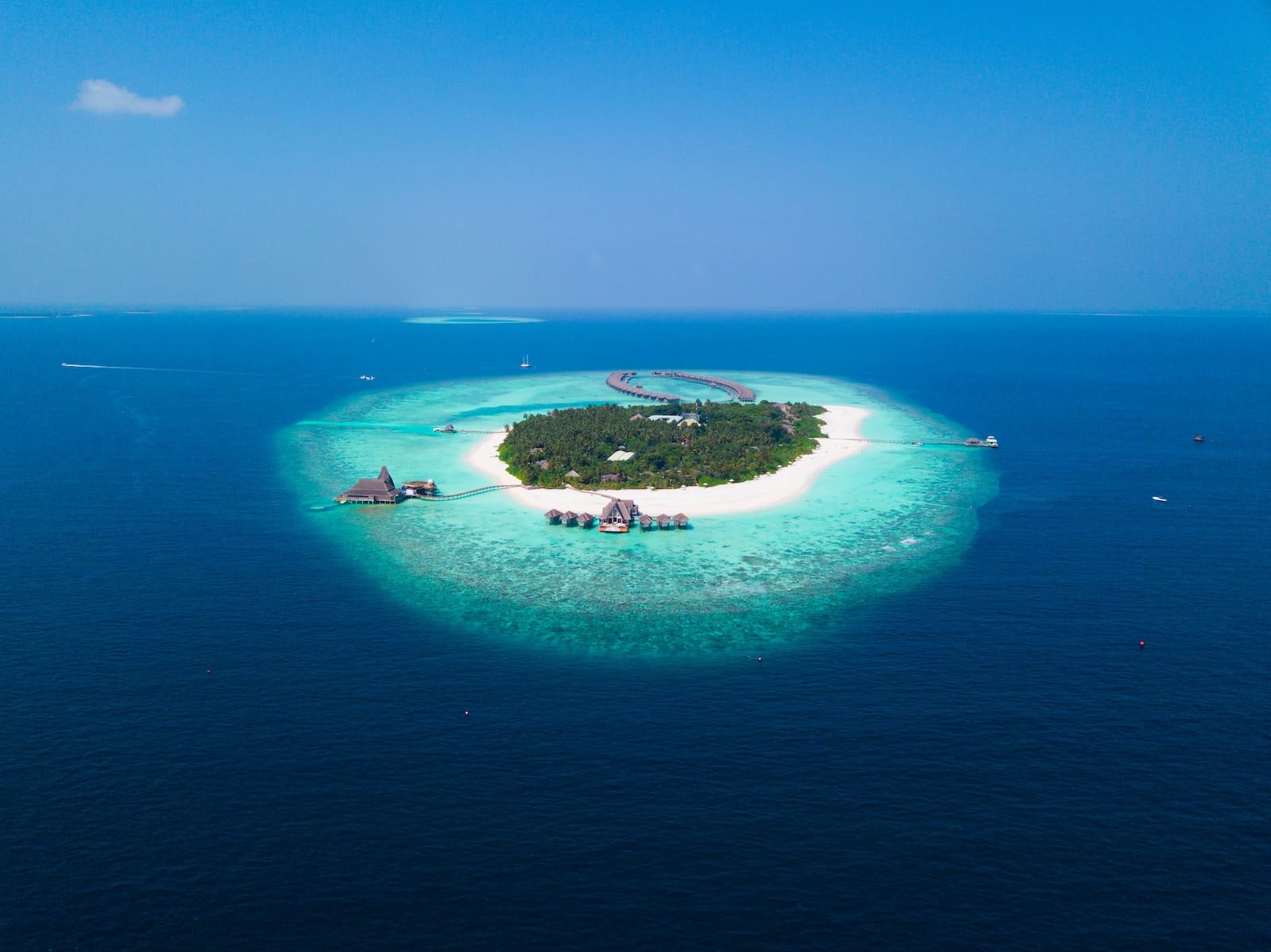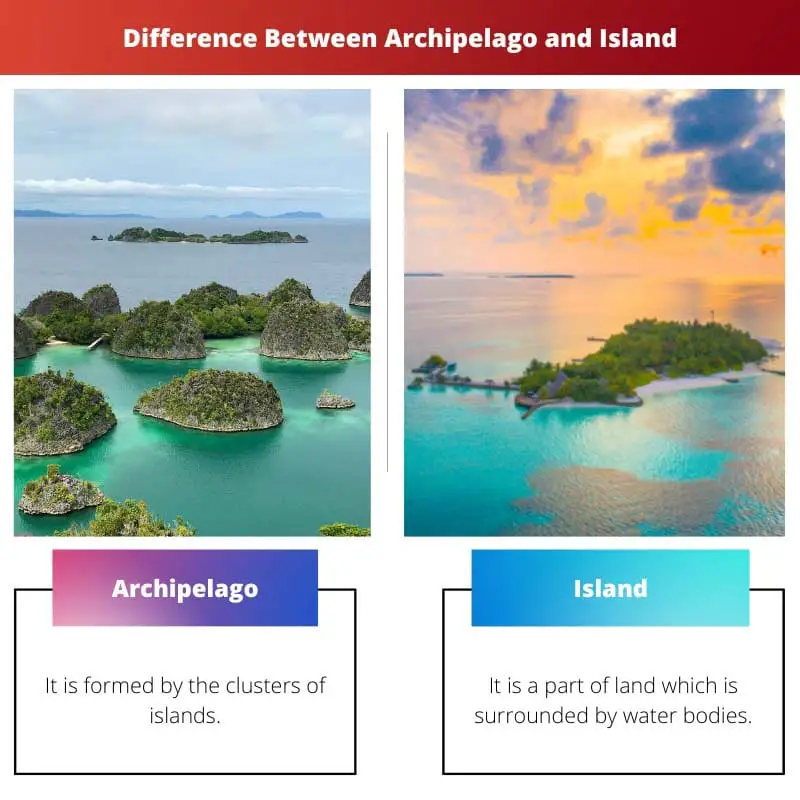Both the terms archipelago and island are found in or around water bodies. An archipelago is defined as a cluster of many islands, whereas an island is a part of the land surrounded by water completely.
Sometimes, it isn’t easy to distinguish between the two terms. Let us discuss the major distinguishing features between the archipelago and the island in detail.
Key Takeaways
- An archipelago consists of a group or chain of islands, formed by volcanic activity or tectonic plate movements, while an island is a single landmass surrounded by water.
- Some famous archipelagos include the Galapagos Islands, the Hawaiian Islands, and the Maldives, whereas well-known individual islands are Madagascar, Greenland, and Borneo.
- Archipelagos support unique ecosystems and biodiversity due to their isolation and various environmental conditions, while individual islands can also exhibit diverse habitats and species.
Archipelago vs Island
An archipelago is a group or chain of islands, while an island is a single landmass surrounded by water. Islands can range from small rocks or sandbars to large land masses like Australia. Archipelagos consist of multiple islands and can vary from small clusters to large chains.

An archipelago is formed due to the joining of many islands that vary significantly in their size. These can also be referred to as chains of islands or island clusters based on their formation.
There are several archipelagos all over the world, which have great tourist attractions as well.
An island is a large part of the land surrounded by small or large water bodies. These can be formed due to the deposition of coral exoskeleton over time.
They vary in their area of land, due to which some islands can be small, and some of them can be large. One of the most common examples of an island is Hawaii island in the United States.
Comparison Table
| Parameters of Comparison | Archipelago | Island |
|---|---|---|
| Definition | It is formed by the clusters of islands | In comparison to the former, it does not have as many attractive spots |
| Attraction | An archipelago has more attractive beaches and tourist spots | Water bodies surround islands |
| Relation with water bodies | The archipelago is closely scattered in a body of water | The largest archipelago in the world is the Malay Archipelago (waters of Persian Gulf) |
| Largest in the world | Baffin Island, New Guinea | Greenland is the largest island in the world. |
| Examples | Hawaiian archipelago, Galapagos archipelago | Baffin island, New Guinea |
What is Archipelago?
An archipelago can be defined as a group of islands that gets scattered into different forms of water sources such as lakes, rivers or oceans.
The formation of the archipelago is due to the eruption of volcanoes from the ocean floor. These eruptions take place for a more extended period and then lead to the formation of an archipelago.
Most of the time, an archipelago is found in oceans, but in some cases, it can also be found in smaller water bodies such as lakes or rivers.
The deposition of several materials also forms some of them.
Some examples of archipelago worldwide are the Canadian Arctic Archipelago, Caribbean Island, Florida Keys, Galapagos Archipelago, Hawaiian Archipelago and many more.
The largest archipelago in the world is the Malay Archipelago which is known to be a result of glacial retreat.
Archipelagos can be of different types, such as continental islands and continental fragments.
They can also be formed due to volcanic eruptions. The largest country archipelago in Indonesia is a part of the Malay archipelago.
Some archipelagoes have a leisurely appearance which is essential for tourism in a country, and they also help in the conservation of wildlife.

What is Island?
Water bodies surround islands, and they do not connect to any land of the continent when many islands come together with their group forming an archipelago.
The islands which are small in size are referred to as islets. These islands can be divided into two forms – oceanic and continental.
Islands that rise from the surface of the ocean are called oceanic islands. Continental islands, on the other hand, are unsubmerged parts of the land which are surrounded by water bodies.
One of the most common examples of an island is Hawaii island in the United States. The largest islands in the world are Greenland.
New Guinea, Baffin Island etc. Ilha Island is considered the most significant island located in a river. They vary in their area of land, due to which some islands can be small, and some of them can be large.
Another form of the island is a coral island formed by the collection of the skeleton of corals over some time.

Main Difference Between Archipelago and Island
- An archipelago is defined as a cluster of islands, whereas an island can be defined as a part of the land surrounded by water completely.
- The area of an archipelago is more than an island because it is just a part of an archipelago.
- The archipelago is more beautiful as compared to an island, and it also attracts more tourists visions.
- An example of an archipelago is The Caribbean Archipelago, and an example of an island is the Trinidad (southernmost) island of the Caribbean Archipelago.
- The archipelago is closely scattered in a body of water whereas water bodies surround islands.


I didn’t know that archipelagos could be found in smaller water bodies like lakes or rivers. Interesting!
Absolutely, the geological processes behind the creation of archipelagos and islands are quite intriguing.
Right? It’s fascinating to learn about the formation of landforms.
The examples provided help in visualizing the difference between archipelago and island.
I find the comparison table to be very helpful in understanding the differences.
Very informative article, I learned a lot.
I agree, the information presented is well-structured and thorough.
The article was a great read, informative, and well-researched.
I concur, the in-depth coverage of the topic is commendable.
I think the concept of islands and archipelagos could have been explained in a simpler way.
Agreed. The article might be overly technical for some readers.